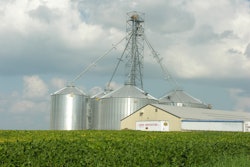On Nov. 15 2013, the Environmental Protection Agency shocked many when it acknowledged the “blend wall” that petroleum groups had been claiming for years, was, in fact, a reality that needed to be addressed immediately. It proposed to cut the amount of biofuels blended into the nation’s fuel supply in 2014 from 14.4 to 13 billion gallons. The EPA is also changing how it formulates the Renewable Fuel Standards blending requirement. From now on it will be taking into account the gallons Americans are expected to use. Whether this will be for the better or worse is up for debate, but that it will send a ripple of change through rural economies is not.
The blend wall
The blend wall refers to the point where ethanol can no longer be blended into the fuel supply without surpassing the standard 90% petroleum 10% ethanol mixture (E10) that has been deemed safe for all automobile engines. When the law was first enacted, Americans were expected to follow the trend they had been on for years, a continued increase in the amount of fuel used each year. However, after the recession of 2008, and the rise of gas prices due to uncertainty in the Middle East, Americans rapidly started to cut their fuel consumption. This led to a situation where less fuel was being used, but the amount of Alternative Fuels required to be blended into the supply was rising, pushing toward a point where the current blend of E10 would no longer adequately handle the required amounts of ethanol.
Once that threshold is crossed, the extra ethanol needs to be either blended into a higher ratio, such as 85% petroleum/15% ethanol (E15) or 15% petroleum/85% ethanol (E85) mix. These blends have not been as popular with consumers as expected, though the gap in price between E85 and E10 has started to grow, which may have increased interest. Though E15 has been pronounced safe by the EPA, for newer model vehicles, it still had legislative hurdles to jump through on the state level, and has experienced significant pushback from the petroleum industry. There are also issues with fueling stations not having the infrastructure to support so many blend variations, and though the EPA has approved E15 for use in cars made since 2001, many car manufacturers threaten to void warranties if it is used. The American Feed Industry Association finds itself with members on both sides of this debate. The membership position is that ultimately all users of the U.S. corn crop, including ethanol, should compete for those available supplies in a free market system.
“We are at the point today where the renewable fuel standard will not work with U.S. gasoline consumption,” said Joel Newman, president, CEO and corporate treasurer of the American Feed Industry Association. “As a result, something needs to change, and that is going to affect everyone involved, including the ethanol industry”
Renewable Identification Numbers
To make sure the RFS was met, the EPA required blenders to submit a set amount of Renewable Identification Numbers (RINs), a number assigned to a batch of biofuel. RINs are bought and sold on the market. If a blender mixed more than they needed, they can sell it on the market to a blender who did not meet the requirements. The National Corn Growers Association believes that this market has just started to function as it was designed, making higher blends more attractive to blenders and consumers, further decreasing dependence on foreign fuel.
“The RIN market was finally starting to work the way it was designed,” said Paul Bertels, vice president of production and utilization at the National Corn Growers Association. “Up until December of last year, RINs had been bouncing around at about half a cent, giving petroleum companies no incentive to mix in biofuels. Then after some issues, we saw RIN prices skyrocket. Last summer we saw E85 up to a buck cheaper in some parts of the country, giving the blenders a reason to mix it and sell leftover RINs in the market.”
Was the market working?
The blend wall is where much of the discussion about the RFS is focused. Those supporting the original congressional plan to keep gradually raising the amount blended, say that the blend wall is what the RFS was intended to accomplish. Their argument is that when the petroleum industry can’t meet the RFS, and buying RINs becomes unprofitable, they will be forced to find ways to blend more of the higher percentage mixes.
增加RIN市场可能是什么finally caused the EPA to change its approach to the RFS. Rather than find ways to mix higher blends, which the petroleum industry says there is a lack of demand, they instead threatened to pass the increased price of RINs on to the consumer.
“Somewhere at the White House level, they became concerned as the RIN prices skyrocketed in early 2013,” explained Scott H. Irwin, the Laurence J. Norton chair of agricultural marketing for the University of Illinois department of agricultural and consumer economics. “Either they believed that this was having an impact, or they were concerned there would be the perception that it was having an impact on gas prices. This concern over voter perception on the RFS mandate’s effect on gas prices led them to figure how to fix the problem.”
The drought
One of the great shames to come of this debate is that the RFS has caused a rift within the agriculture community. It was never so apparent as in 2012, when the United States suffered one of the worst droughts in recent memory. With a smaller corn crop, the pressure to meet demand became too much, and the price of corn skyrocketed.
Though there is debate on how much these higher corn prices affected the price of feed or consumer food, it made the average consumer aware of the fuel mandate and coalitions of opponents descended on Washington, D.C. to demand change.
“The Renewable Fuel Standard was put in place to support biofuels when it was a start-up industry, and that’s been done for several industries in the initial stages,” Newman says. “Now that the ethanol industry is using more than 40% of the annual production of corn, the
United States government needs to recognize the importance of food security, as well as energy security.”
The legalities
There are questions about whether the EPA has the power to lower the mandate without the approval of Congress; the EPA claims that it has the right to lower the mandate due to a domestic shortage, which though was originally thought to be for a shortage of renewable fuels, the EPA is taking it as applying to a shortage of demand. Expect the issue to go to court, as biofuel groups immediately threatened to sue when the cut was first leaked.
“今年美国环保署基本上改变了释义n of supply. Now supply means the ability of the gasoline market to absorb this,” Bertels said. “So we were focused on legislative issues, and all of a sudden they change the definition of a word.”
The future
The answer to how this proposal will change the marketplace varies for every person you ask. For those in opposition of the change, there is fear that this will cause uncertainty in the grain markets, leaving them with even vaguer notions on how much they should plant for the coming year. For now, they are focused on changing the EPA’s mind, and though they have never significantly altered a proposal yet, these are uncharted waters and EPA has promised to consider it.
“Right now the decision hasn’t been made,” said Bertels. “So our sole focus is getting growers, agribusinesses and everybody in rural America just to flood the EPA with comments, and appeal to their common sense. At this point, we feel that we can still turn this.”
Others, while less optimistic that the EPA will change their mind, see this is as a change toward the better. Lower corn prices will be a boon for feed manufacturers and the struggling livestock sector that is seeing herds at the lowest levels in living memory.
“The effects will vary,” said Newman. “For feed manufacturing, livestock and poultry producers, there will be a little more corn on the market due to reduced mandated demand for corn. For the ethanol industry, it’s going to lower their guaranteed market, to some extent, but it also provides opportunities to export or expand more markets for ethanol.”
They also maintain that this is far from the end for the ethanol industry, and a gradual decline will be decidedly easier than the large decrease or complete repeal of the RFS, that many opponents wanted.
“The EPA’s proposal takes a lot of wind out of the sails of the repeal movement because it is basically a capping of the RFS at the proposed levels,” explained Irwin. “It doesn’t indicate that they will decline, just that they will stay steady.”
This cut in the blending requirements may have a negative effect on cellulosic ethanol. This industry has always been “a few years away” but has never materialized in the levels that were estimated. The EPA has had to cut the blend requirements for advanced biofuels every year, due to supply never materializing. Even though it seems to have been gaining steam again, with the POET-DSM’s first commercial plant on schedule to open, and scientific discoveries showing great promise, this move may discourage investment into that field.
“No one can deny that this is a negative signal for future investment in research and development and cellulosic biofuel,” Irwin stated. “What it says from the Administration is that we aren’t willing to force in biofuels if it is very costly.”

.jpg?auto=format%2Ccompress&crop=faces&fit=crop&h=48&q=70&w=48)




















